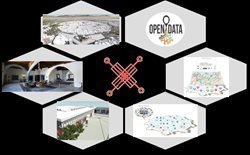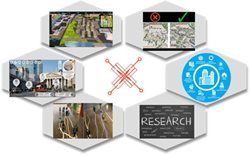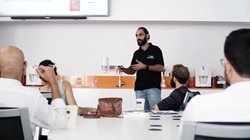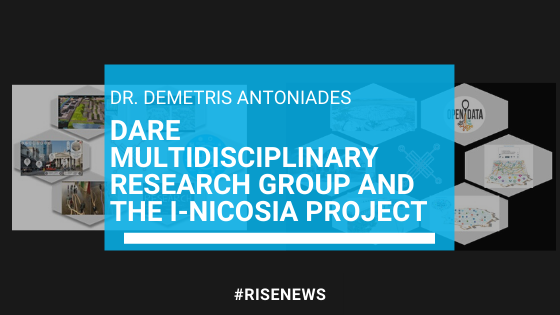DARE MRG is responsible for implementing the i-Nicosia (short for INteractive niCOSIA) project, the first RISE flagship project and a multidisciplinary research project that brings together the competencies of many, if not all, researchers in RISE to create knowledge with not only academic but also real-life value. The project aims at creating a Digital Twin of Nicosia by integrating available data into a 3D model and visualizing the real-time and future conditions of the city, simulating solutions to optimize planning activities and proving the best solution in case of emergency scenarios.
In July 2019, Demetris Antoniades Ph.D., joined RISE as the leader of the Digitally Enhanced Urban Environments (DARE) MRG and we asked him to give us some valuable information regarding the DARE MRG as well as the i-Nicosia flagship project.
As the DARE MRG leader, which goal do you want to reach through your work and in what timeline?
The environments we live our lives in today are increasingly surrounded by a number of digital devices, sensors and actuators, a trend that is not expected to diminish any time soon. Depending on the scenario these digital enhancement is what puts the word smart in front of houses, public spaces, cities and even whole countries. In this digitally enhanced world, our research tries to identify how these ubiquitous devices can work towards improving our day to day live. To do this we need to understand not only how the devices work but also how humans interact with their environment (both physical and digital) and how these interactions evolve over time. In DARE we try to look in both the human and the digital environment as a living, growing organism that learns and adapts not only by measuring its state but by listening to its needs.


Did you establish any collaborations with external partners in order to reach the implementation stage of the RISE flagship project?
Of course. It goes without mention that we are in constant knowledge exchange but also actively collaborating for several modules of the flagship with the RISE advanced partners, UCL and Max Planck. Furthermore, we are constantly reaching out to local and international organizations with whom we design and work on solutions that can be implemented in both our flagship project and in their project of interest. In a local level our main effort is to bring everyone onboard and make sure that they share our vision for making iNicosia an inclusive platform where every organization can share its data with the public and use the multiple resource provided to build applications that serve its needs and goals.

What is it like working for an organization like RISE? Where do you see the Research Centre of Excellence in 10 years from now?
In two words, “challenging” and “exciting”, as any newborn organization would be. “Exciting” because we are building something new and “challenging” because we need to identify new and effective processes that will move us forward as an organization and as a country. We owe this pursue of excellence to every individual and organization that supports us, as much as we owe it to ourselves. RISE has taken the risk of building a Research Centre outside of the universities that support it. This is something quite uncommon for a Teaming project but something for which RISE is considered a reference model for future Centres of Excellence.
Looking around me at any point within a workday I see people passionate for the success of this effort at all levels. I see people that are ready to RISE UP their sleeves, fight the challenges and move with excitement towards a better future. With this picture I have no doubt that RISE will be there in 10 years from now, as a well-established and sustainable Centre of Excellence, fighting new challenges with the same excitement.
Don’t forget to bookmark this blog, email to a friend/colleague or sign up to get instantly notified on every new blog post. Of course, we’d love getting your feedback on RISE and this blog — and what you want to see discussed (and showcased) in the future.

